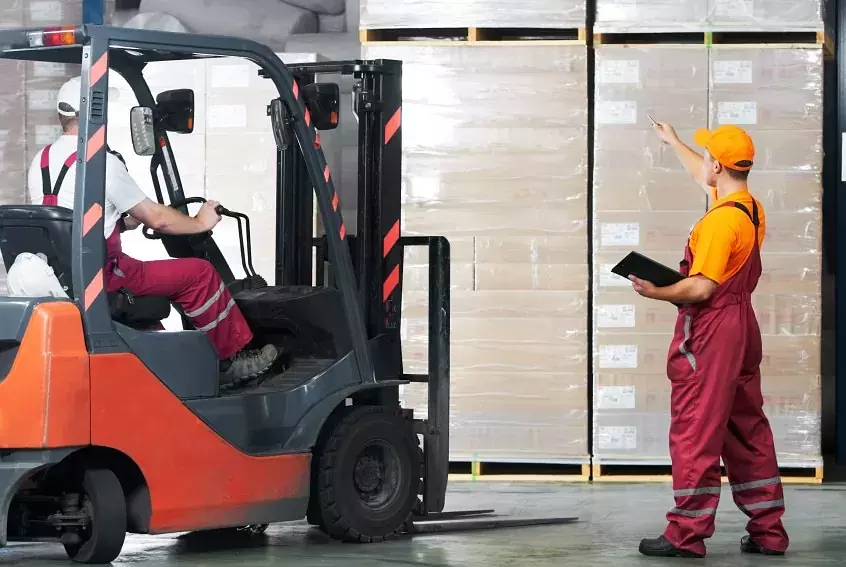 With rising energy costs and support mounting for environmentally safe power sources, companies of all sizes and types are looking for ways to encourage efficiency and eco-friendly production. Nearly every business process is reviewed and scrutinized for improvement, with the goal being to enhance quality and productivity. The processes involved in handling materials, such as inventory or industrial equipment, is no exception.
With rising energy costs and support mounting for environmentally safe power sources, companies of all sizes and types are looking for ways to encourage efficiency and eco-friendly production. Nearly every business process is reviewed and scrutinized for improvement, with the goal being to enhance quality and productivity. The processes involved in handling materials, such as inventory or industrial equipment, is no exception.
In fields like manufacturing and shipping, companies are searching for ways to lower the cost of transporting and managing goods. Thanks to new fuel-cell technology, those industries can reduce costs by powering their forklifts with alternative fuel.
Fuel Cells Starting to Replace Lead-Acid Batteries in Lift Trucks
In 2011, approximately 34 companies were taking advantage of the environmental and cost benefits of fuel cells. Collectively, these businesses saved millions in energy costs and reduced carbon emissions by several hundred-thousand metric tons every year.
These companies represent a range of industries and billions in revenue. Examples include Sysco Corp, AT&T, Price Chopper, Whole Foods Market, Wal-Mart and Coca-Cola.
The last three businesses in that list have invested in a combined 302 fuel-cell powered forklifts. Their fuels cells produce 10.1 megawatts (MW). For comparison, a 10-MW power plant in Germany can produce enough energy for about 3,000 homes.
While electric lifts are common in smaller applications, internal combustion engines usually handle larger loads. But today, full-cell engines and hybrid models are available that can meet the demands of heavy-load projects.
How Do Fuel-Cell Forklifts Work?
Most fuel-cell trucks operate on pure hydrogen or natural gas. Some run on propane; others can run on renewable fuels like biogas or anaerobic digester gas.
Biogas also serves as a source of revenue for farmers that can supply the biomass to power the fuel cell. This includes organic remnants and animal waste.
Fuel cells come with a number of benefits besides lower energy bills. They are immune to grid power outages, and businesses can qualify for a Leadership in Energy and Environmental Design (LEED) certification. This is a requirement for certain government tax credits.
Almost Any Industry Can Benefit From Fuel-Cell Technology
Manufacturing isn’t the only field that’s benefitting from “green” forklifts. They’re becoming popular at corporate headquarters, in grocery markets, in mixed-used residences and at office parks.
AT&T, for example, has installed more than 260 fuel cells and plans to add at least another 120. Carla’s Pasta, which operates a 58,000 square-foot facility in Connecticut, is installing a new FuelCell Energy DFC300 plant to power its industrial machinery.
Besides forklifts, companies like Coca-Cola are introducing fuel-cell powered pallet jacks. In fact, the soft-drink manufacturer recently added 19 fuel-cell pallet jacks to its fleet in San Leandro.
The GenDrive fuel cells at the plant come from Plug Power. The cells replace the drop-in batteries in electric forklifts. They can recharge in minutes with hydrogen, which offers a faster turnaround and increased space because it eliminates battery-charging stations.
With more floor space, Coca-Cola reports that the fuel-cell technology has increased production by 15 percent and lowered operational expenses by as much as 30 percent.
The Future of Fuel-Cell Forklifts
As more options for alternative fuel and hybrid designs emerge, it may be difficult for business owners to identify the best forklift models for their needs. But one thing’s for certain: Clean energy will become a more popular power source in a range of industries. Companies worldwide have proven that this new innovation can reduce energy costs and improve production. If you own a company that uses forklifts, “green” lift trucks have never been a smarter investment.
